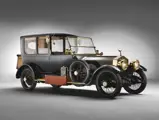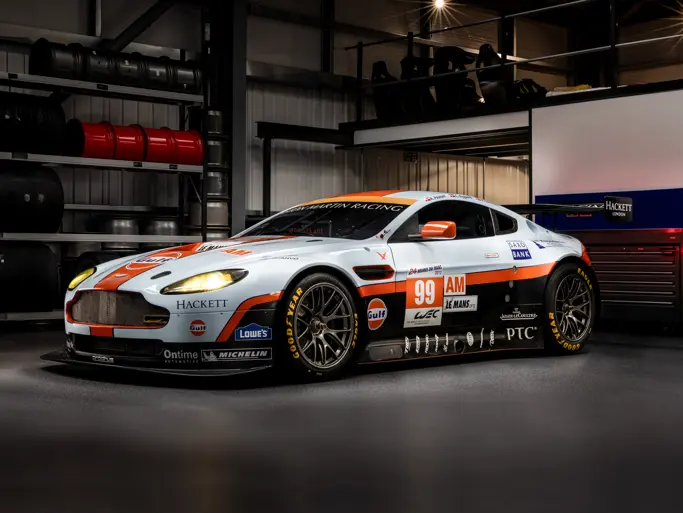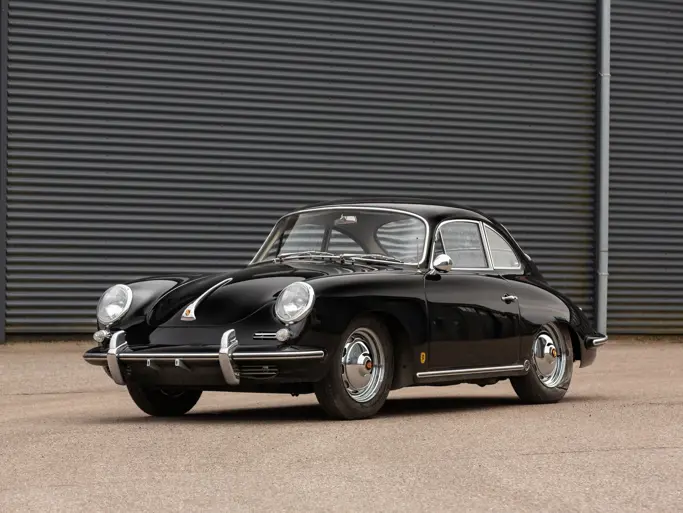Villa d'Este 2011
1915 Rolls-Royce 40/50 Silver Ghost Limousine by H.A. Hamshaw
{{lr.item.text}}
€520,000 - €700,000 EUR | Not Sold
 | Cernobbio, Italy
| Cernobbio, Italy
{{internetCurrentBid}}
{{internetTimeLeft}}

50 bhp, 7,428 cc in-line L-head six-cylinder engine, four-speed manual gearbox with direct drive fourth gear, worm and nut steering, foot-operated brakes with rear drums, live axle front suspension with semi-elliptical leaf springs, live axle rear suspension with cantilever leaf springs. Wheelbase: 3,500 mm (138")
- Offered from the Estate of John M. O’Quinn
- One of about five Rolls-Royces bodied by H.A. Hamshaw, Ltd.
- Ex-du Pont family, A. Atwater Kent, Jr.; later part of Richard Solove collection
- Original configuration – chassis, running gear and coachwork
H.A. Hamshaw, Ltd. and the Silver Ghost
H.A. Hamshaw of Leicester in the UK had its origins in the mid-19th Century when the firm of Parr & Hamshaw was first established. In about 1880, Harry Hamshaw bought out his partner and went on to create a business of building prestigious carriages. During the early 1900s, the firm began both selling and bodying cars, exhibiting their work at the Olympia shows from 1919 to 1928. Hamshaw primarily exhibited cars for which it held agencies – Wolseley, Vauxhall, Humber and Sunbeam. Most interesting are the five or so Rolls-Royces, including this car, that the firm is known to have bodied.
Late in 1906, the 40/50-hp model was introduced at the London Motor Show on the stand of C.S. Rolls and Company. The new model was destined to achieve a status few automobiles would ever equal in the history of motor vehicles. The Silver Ghost, as it later became known, swiftly established Rolls-Royce as the ultimate in luxury motoring–so much so that the company rightfully touted every vehicle as “The Best Car in the World.” Silver Ghost production continued for 18 years, totalling nearly 8,000 cars with 6,173 built in England plus 1,703 Springfield models. This included the staff cars and armour-plated combat versions which saw service during WWI.
Chassis 2BD
Due to the war effort, the supply of Rolls-Royces available to the public became limited; such was the case in both the UK and US factories. During the summer of 1914, Rolls-Royce became entrenched in the production of aircraft engines, and the building of automobiles for civilian purchase came to a virtual standstill.
Documented in John Fasal’s definitive book The Edwardian Rolls-Royce, chassis 2BD’s first owner was one Captain H. Whitworth of Beverley, Yorkshire, UK. His Silver Ghost had been delivered to Hamshaw in 1915 for its coachwork, following testing at Rolls-Royce. The next owner of record was the du Pont family, via Rolls-Royce distributor Robert W. Schuette. The early history that has long been associated with this car entails Mr. Alfred I. du Pont, whose second wife Alicia wanted a new Rolls-Royce limousine, and it was King George V who ensured they received the car as a courtesy. Mr. du Pont, who was in control of the family business, supplied large quantities of gunpowder to the British military. The King, well aware of the du Pont family support, saw to it that the suitable car was made available to them, an appropriate show of gratitude to the family, who received their Silver Ghost at their family estate in Wilmington, Delaware. At the time, the du Ponts were among America’s wealthiest families. Alfred was a graduate of Phillips-Andover and the prestigious Massachusetts Institute of Technology before joining the family business as a director and, later in life, losing and re-building a personal fortune and investing in Florida real estate.
Du Pont passed away in 1935, 15 years after Alicia. 2BD remained in the general Delaware area as the next owner of record was A. Atwater Kent, Jr., a prominent Philadelphian whose father founded the famed manufacturing company heavily involved in radios and electronics. Subsequent owners included noted Rolls-Royce collector James C. Leake of Oklahoma in 1983.
The car then spent time abroad, back in the UK in the collections of Sam Macdonald-Hall of Essex and Terry Cohn of Churt, Surrey. It returned to the United States in 1993 to become part of the noted Richard Solove Collection in New Albany, Ohio. Prior to its return to the United States, Solove had the vehicle meticulously and sympathetically restored by David Hemmings while still in England. More recently, the car has been part of the large private collection of Houston attorney John O’Quinn.
2BD is nothing short of opulent. It is replete with the finest workmanship typical of expert carriage builders of the era. Fittings are brass rather than nickel, and the dark olive (almost black) exterior is beautifully detailed with gold pinstriping. Six painted wire wheels with brass hubs and a handsome wicker trunk are provided. Inside are carved ivory door handles, bevelled glass windows, cut crystal lamps, an inlaid wood folding table, two jump seats and door pockets. Communications to the chauffeur are via a tubular intercom. The chauffeur’s compartment is upholstered in button-tufted black leather, while the passenger compartment is lavish in beige cloth with embroidered silk window pulls and trim-work, including rear compartment shades and sliding divider. Perhaps most notable is the elegant, pleated cloth rosette headliner that billows cloudlike overhead. C.A.V. lighting, triple Elliot speedometer and a set of leather-wrapped flasks in the right rear armrest add to the exquisite details of this magnificent machine.
This is, without question, one of the most outstanding examples of an early Rolls-Royce extant today. The car is believed to remain in its original configuration as built new, including its chassis, running gear and coachwork. The stunning yet rare body by Hamshaw shows that the firm was as capable of building luxurious, formal bodies as its more prolific competition. An opportunity to acquire a vehicle of this stature and provenance is rare indeed and is, possibly, a once-in-a-lifetime opportunity.
As part of a large private collection, this car has seen limited exercise. RM strongly advises the successful bidder carry out a thorough service before driving the car on the open road.
50 cv, motore 6 cilindri in linea di 7.428 cc con valvole laterali, cambio manuale a quattro marce con quarta in presa diretta, sterzo con vite senza fine, freni a tamburo sulle ruote posteriori con comando a pedale, assale anteriore con balestre semi-ellittiche, assale posteriore con balestre cantilever. Passo: 3.500 mm
- Proveniente dalla Successione di John O’Quinn
- Una delle forse solo cinque Rolls-Royce carrozzate da H.A. Hamshaw
- In passato di proprietà della famiglia du Pont e quindi di A. Atwater Kent, Jr.; successivamente nella collezione di Richard Solove
- Telaio, trasmissione e carrozzeria originali
H.A. Hamshaw, Ltd. e la Silver Ghost
La società H.A. Hamshaw di Leicester, in Gran Bretagna, risale alla metà del 19° secolo quando fu fondata la Parr & Hamshaw. Verso il 1880, Harry Hamshaw liquidò il suo socio e iniziò a costruire carrozze di prestigio. Nei primi anni del 1900, l’azienda cominciò a vendere e carrozzare vetture; dal 1919 al 1928 presentò proprie creazioni al Salone di Londra, esibendo inizialmente vetture di case per le quali aveva la rappresentanza, e cioè Wolseley, Vauxhall, Humber e Sunbeam. Le più interessanti sono le Rolls-Royce, forse cinque in tutto compresa la vettura offerta, che l’azienda ha carrozzato.
Il modello 40/50hp fu presentato alla fine del 1906 nello stand della C.S. Rolls and Company al Salone di Londra. Il nuovo modello era destinato a raggiungere una posizione che poche altre vetture avrebbero uguagliato nella storia dell’automobile. La Silver Ghost, nome con il quale divenne in seguito conosciuta, fece subito affermare la Rolls-Royce come il massimo produttore di autovetture di lusso, tanto che la società giustamente la pubblicizzò come “La Migliore Vettura del Mondo”. La Silver Ghost fu prodotta per 18 anni in circa 8.000 esemplari, dei quali 6.173 costruiti in Inghilterra e 1.703 a Springfield, negli USA. Questo totale comprende anche le versioni militari e le autoblindo utilizzate durante la Seconda Guerra Mondiale.
Il telaio 2BD
A causa dello sforzo bellico, la disponibilità di vetture per i privati divenne limitata, sia nella fabbrica in Gran Bretagna sia in quella negli USA. Durante l’estate del 1914 la Rolls-Royce si dedicò quasi completamente alla produzione di motori per aerei mentre quella di vetture per uso civile divenne in pratica sporadica.
Come documentato nel libro-bibbia di John Fasal “The Edwardian Rolls-Royce”, il primo proprietario del telaio 2BD fu un certo Capitano H. Whitworth di Beverley, nello Yorkshire in Gran Bretagna. Nel 1915, dopo la prova effettuata dalla casa, la sua Silver Ghost fu consegnata alla Hamshaw per essere carrozzata. Il successivo proprietario registrato fu la famiglia du Pont, tramite il distributore Rolls-Royce di New York Robert W. Schuette. All'inizio della storia di questa vettura c'é da sempre Alfred I. du Pont, la cui seconda moglie Alicia desiderava una Rolls-Royce limousine, e fu Re Giorgio V che si adoperò affinché ricevessero la vettura in omaggio. Mr. du Pont, che aveva il controllo degli affari di famiglia, era un importante fornitore di polvere da sparo all'esercito inglese. Il Re, ben a conoscenza del supporto fornito dalla famiglia du Pont, fece in modo di mettere la vettura a loro disposizione, un'appropriata dimostrazione di gratitudine verso la famiglia che ricevette la Silver Ghost nella residenza estiva di Wilmington, nel Delaware. All'epoca la famiglia du Pont era fra le più ricche degli Stati Uniti; Alfred si era laureato alla Phillips-Andover e al prestigioso Massachusetts Institute of Technology prima di dedicarsi agli affari di famiglia come dirigente, e in seguito perdendo e ricostituendo una fortuna personale anche con investimenti immobiliari in Florida.
Du Pont morì nel 1935, 15 anni dopo Alicia. La 2BD rimase nel Delaware visto che il proprietario successivo fu A. Atwater Kent, Jr., un ben noto cittadino di Filadelfia il cui padre aveva fondato una famosa industria manifatturiera molto attiva nel campo delle radio e dell'elettronica. Fra i proprietari successivi ci fu, nel 1983, il noto collezionista di Rolls-Royce, James C. Leake dell' Oklahoma.
La vettura fu in seguito esportata in Gran Bretagna e fece parte delle collezioni di Sam Macdonald-Hall nell'Essex e di Terry Cohn di Churt, nel Surrey. Di nuovo negli Stati Uniti nel 1993, entrò nella famosa collezione di Richard Solove a New Albany, in Ohio. Prima di reimportarla negli USA, Solove fece eseguire un accurato e preciso restauro da David Hemmings in Inghilterra. In anni più recenti la vettura ha fatto parte della grande collezione privata del noto avvocato di Houston, John O’Quinn.
La 2BD è una vettura opulenta, dotata delle più belle realizzazioni artigianali tipiche degli esperti costruttori di carrozze dell'epoca. Gli accessori sono in ottone e non in nickel e la verniciatura verde oliva scuro, quasi nero, è magnificamente esaltata da un filetto dorato. E' dotata di sei ruote verniciate a raggi con mozzo in ottone e un portabagagli in vimini fatto a mano. L'interno è impreziosito dalle maniglie delle porte in avorio intagliato, vetri molati ai finestrini, lampade in cristallo, tavolo pieghevole in legno intarsiato, due seggiolini di fortuna e tasche sulle portiere. La comunicazione con l'autista avviene tramite un interfono tubolare. Il posto guida é finito in pelle nera bottonata, mentre i posti passeggeri sono rifiniti con un lussuoso tessuto beige e tendine dei finestrini e tiranti in seta ricamata, così come la tendina posteriore e il divisorio discendente. Forse il particolare più degno di nota é l'elegante imperiale a rosetta in tessuto pieghettato che ondeggia come una nuvola sulle teste. Fanaleria di marca C.A.V., un tachimetro triplo Elliot e un set di fiaschette rivestite in pelle nel bracciolo posteriore destro, completano gli squisiti accessori di questa stupenda vettura.
Questo é senza dubbio uno dei più eccezionali esemplari oggi esistenti delle prime Rolls-Royce. Si ritiene che la vettura sia rimasta nella sua configurazione originaria come quando è stata costruita, compresi il telaio, la meccanica e la carrozzeria. La bellissima e rara carrozzeria di Hamshaw dimostra come l'azienda fosse capace di costruire lussuose vetture formali come i suoi più prolifici concorrenti. E' veramente raro avere la possibilità di acquistare una vettura di questa importanza e provenienza, ed è, forse, un'opportunità che capita una sola volta nella vita.
Facente parte di una grande collezione privata, quest'auto e stata usata poco. RM consiglia fortemente all'offerente vincitore di fare una revisione accurata dell'auto prima di guidarla su strada aperta.





